What is the Burj Khalifa Purpose? Standing at 828 meters (2,717 feet), the Burj Khalifa isn’t just the world’s tallest building—it’s Dubai’s ultimate symbol of ambition. Beyond breaking records, it draws millions of visitors yearly with attractions like the Best Places with Burj Khalifa View, including observation decks, rooftop bars, and nearby spots like the Dubai Fountain.
What is the Burj Khalifa Purpose beyond tourism? It’s a hub for business, luxury living—home to Best Places with Burj Khalifa View like sky-high restaurants and observation decks—and engineering breakthroughs, blending art, culture, and innovation to redefine skylines. Dive deeper to uncover how this icon shapes Dubai’s identity.
🏙️ Introduction: The Burj Khalifa at a Glance
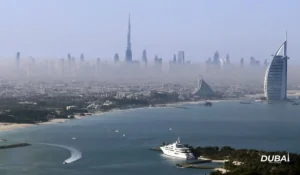
- Height: 828 meters | Floors: 163 | Location: Downtown Dubai.
- Construction: Built between 2004–2010 | Cost: $1.5 billion.
- Key Stakeholders: Developed by Emaar Properties, designed by Skidmore, Owings & Merrill.
The Burj Khalifa isn’t just a skyscraper—it’s a statement. But what is the Burj Khalifa purpose in a city already famed for luxury and innovation? Let’s explore its historical, economic, and cultural significance.
🌍 Historical & Cultural Context: Why Was the Burj Khalifa Built?
What is the Burj Khalifa Purpose? Beyond its role as a global icon, the Burj Khalifa’s construction in 2010 was deeply rooted in Dubai’s historical and cultural context. Built during the aftermath of the 2008 financial crisis, it symbolized resilience and ambition, showcasing the UAE’s shift from oil dependency to a knowledge-based economy. Culturally, its design draws inspiration from Islamic architecture—the stepped silhouette mirrors desert flowers and minarets—while embodying modernity. Why was the Burj Khalifa built? To cement Dubai’s identity as a futuristic hub, attract tourism, and honor the vision of Sheikh Mohammed bin Rashid Al Maktoum, who sought to put the city on the map as a beacon of innovation. Today, it bridges tradition and progress, hosting everything from corporate offices to At the Top observatory visits.

Dubai’s Vision for Global Recognition
Dubai sought to diversify its economy beyond oil, investing in tourism, real estate, and iconic architecture. The Burj Khalifa became a cornerstone of this strategy, branding Dubai as a modern, global city.
Inspiration Behind the Design
The tower’s design blends Islamic geometry (inspired by the desert Hymenocallis flower) with cutting-edge technology. Its name honors Sheikh Khalifa bin Zayed Al Nahyan, the UAE’s former president, reflecting national pride.
🔑 Key Takeaway: The Burj Khalifa is a bridge between tradition and futurism, embodying Dubai’s cultural and economic aspirations.
🏗️ Architectural & Engineering Purpose: Pushing Boundaries
Architectural & Engineering Purpose: Pushing Boundaries defines the Burj Khalifa’s DNA. Designed to shatter limits, its Y-shaped floor plan, buttressed core, and wind-resistant structure redefined skyscraper engineering. Rising 828 meters, it holds records for the tallest building, highest observation deck (At the Top), and longest elevator travel. What is the Burj Khalifa Purpose beyond its technical feats? Built to showcase Dubai’s futuristic vision, it blends cutting-edge tech (like heat-resistant cladding) with artistic ambition while driving tourism and global prestige. How to Check Burj Khalifa Availability? Secure timed tickets via the official website or trusted platforms—especially for sunset slots or events like New Year’s Eve fireworks. Whether marveling at its design or planning a visit, the Burj Khalifa remains a testament to humanity’s ability to conquer the skies.
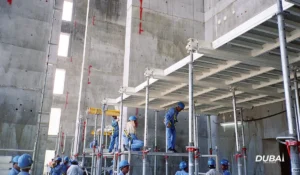
Innovations in Skyscraper Design
- Buttressed Core Structure: A triangular base stabilizes the tower against desert winds.
- Vertical Transportation: 57 elevators speed up to 10 meters per second.
- Material Durability: High-strength concrete withstands extreme heat.
What is the Burj Khalifa purpose for engineers? To prove that megatall structures are achievable, redefining urban skylines.
Symbol of Human Achievement
Dubai’s Burj Khalifa showcases technological prowess, inspiring projects like Saudi Arabia’s Jeddah Tower. Its spire represents humanity’s limitless ambition.
💼 Economic & Commercial Objectives: Fueling Dubai’s Growth
Economic & Commercial Objectives: Fueling Dubai’s Growth are central to the Burj Khalifa’s role. As a magnet for global tourism and investment, it drives revenue through attractions like At the Top, luxury dining, and corporate leases, cementing Dubai as a business and leisure hub. How to Check Burj Khalifa Availability? Book timed tickets via the official website or apps—ideal for securing sunrise/sunset slots during the Best Time to Visit Burj Khalifa (October–April) when crowds thin and temperatures cool. Beyond tickets, the tower’s mixed-use design (hotels, offices, retail) fuels Dubai’s economy, while its global fame attracts sponsorships and events. For the smoothest experience, align your visit with weekdays or early mornings, avoiding peak holidays. Whether marveling at its skyline or supporting Dubai’s vision, the Burj Khalifa proves that ambition and commerce can soar hand in hand.
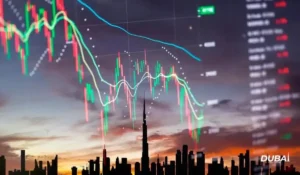
Boosting Tourism
- Observation Decks: At the Top (124th floor) and SKY (148th floor) attract 1.7 million visitors yearly.
- Luxury Attractions: The Armani Hotel Dubai and world’s highest restaurant, Atmosphere.
Tourism contributes 12% to Dubai’s GDP, and the Burj Khalifa is its crown jewel.
Real Estate & Business Hub
- Mixed-Use Spaces: Offices, hotels, and ultra-luxury residences cater to global elites.
- Business Magnet: Enhances Dubai’s reputation as a global business hub.
🎇 Cultural & Symbolic Significance: More Than a Building
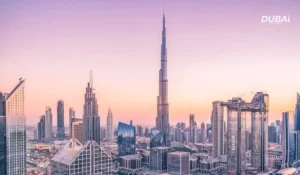
National Pride & Global Icon
The Burj Khalifa embodies the UAE’s rise as a global player. Annual New Year’s Eve fireworks (watched by 1 billion+ people) and light shows celebrating events like Expo 2020 cement its cultural role.
A Beacon of Globalization
Its multicultural workforce and international events symbolize unity, while its design merges Islamic heritage with modernity.
🌱 Environmental & Sustainability Goals: Green Ambitions
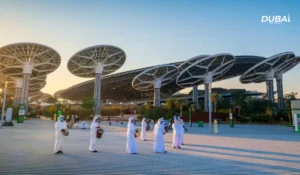
Eco-Friendly Innovations
- Cooling Systems: Use Dubai’s nighttime air to reduce energy use.
- Water Recycling: 15 million gallons annually irrigate the Dubai Fountain and park.
- Solar Panels: Power common areas sustainably.
- LSI Keywords: Sustainable skyscraper design, Burj Khalifa energy efficiency, solar panels in skyscrapers.
Criticisms & Challenges
Despite green features, critics argue megatall buildings have a high environmental footprint. Dubai balances luxury with sustainability—a work in progress.
⚠️ Controversies & Criticisms: The Darker Side

Social Inequality
The Burj Khalifa’s opulence contrasts with migrant labor conditions during its construction. Over 12,000 workers faced extreme heat and low wages, sparking global debates.
Vanity Project or Visionary?
Critics question if such projects prioritize symbolism over practicality. Yet, its economic returns ($1 billion+ annual revenue) silence many skeptics.
🔮 Finally: The Burj Khalifa’s Legacy
What is the Burj Khalifa purpose? It’s a multipurpose icon:
- ✅ Engineering Marvel: Redefining skyscraper limits.
- ✅ Economic Engine: Driving tourism and business.
- ✅ Cultural Symbol: Uniting tradition and modernity.
As cities worldwide chase “the next Burj Khalifa,” Dubai’s titan reminds us to balance ambition with ethics and sustainability. 🌆
FAQs
What is the purpose of the Burj Khalifa?
The Burj Khalifa serves multiple purposes: boosting Dubai’s tourism, showcasing engineering innovation, and symbolizing the UAE’s global ambition. It combines luxury, cultural pride, and economic growth.
Why was the Burj Khalifa built?
Dubai built the Burj Khalifa to diversify its economy beyond oil, attract global tourism, and establish itself as a modern, futuristic city. Its design also pays tribute to Islamic heritage and UAE leadership.
How tall is the Burj Khalifa?
The Burj Khalifa stands at 828 meters (2,717 feet), making it the tallest building in the world. Its height reflects Dubai’s ambition to push architectural boundaries.
What makes the Burj Khalifa an engineering marvel?
Its buttressed core design, wind-resistant structure, and advanced vertical transportation systems make it groundbreaking. Engineers aimed to prove the feasibility of megatall skyscrapers for future urban projects.
How does the Burj Khalifa boost Dubai’s economy?
The tower drives Dubai’s economy by:
- 🏙️ Attracting 1.7 million+ tourists annually to its observation decks and luxury attractions.
- 💼 Housing offices, hotels (like the Armani Hotel Dubai), and high-end residences.
What is the environmental impact of the Burj Khalifa?
While it uses sustainable features like solar panels and water recycling, critics argue megatall buildings have a high carbon footprint. Dubai balances luxury with eco-friendly innovations.
What does the Burj Khalifa symbolize?
It represents UAE national pride, blending Islamic design with modernity. It’s also a globalization icon, hosting events like record-breaking New Year’s fireworks watched by billions.
Is the Burj Khalifa a vanity project?
Critics debate this, but its $1 billion+ annual revenue from tourism and real estate highlights its economic value. Its purpose extends beyond symbolism to tangible growth.
What are the criticisms of the Burj Khalifa?
Key criticisms include:
- ⚠️ Migrant labor issues during construction.
- 🌍 Environmental concerns about energy use.
- 💸 Perceptions of prioritizing opulence over practicality.
How does the Burj Khalifa honor UAE culture?
Its design incorporates Islamic geometry (inspired by desert flowers), and its name honors Sheikh Khalifa bin Zayed Al Nahyan, reflecting cultural and political significance.




